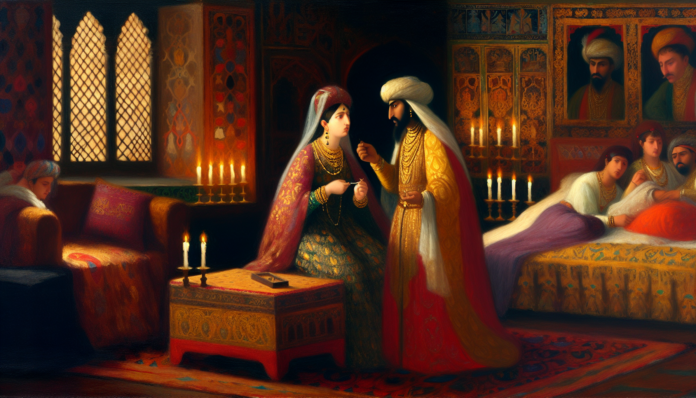Introduction
Throughout history, the intertwining of love and power has often led to scandal. One such captivating narrative involves King Henry VIII of England and Anne Boleyn, whose passionate affair not only rocked the foundations of the monarchy but also transformed the religious landscape of the country. The scandal unfolded in the early 16th century, a time when morality was tightly woven into the fabric of society, and the king’s whims could lead to monumental changes, both politically and personally.
During this period, England was steeped in traditional views on marriage and sexuality, where extramarital affairs were viewed with a mixture of public disdain and private fascination. The Catholic Church’s significant influence dictated that kings and commoners alike abide by stringent moral codes, making Henry’s pursuit of Anne a particularly audacious act.
The Scandal
Henry VIII’s infatuation with Anne Boleyn, a lady-in-waiting, began around 1525, long before he sought to annul his marriage to Catherine of Aragon. The king’s infatuation grew, fueled by Anne’s refusal to become his mistress and her staunch insistence on marriage. This defiant stance was unprecedented; a woman daring to reject royal advances was a radical act at the time.
- Key Events: In 1527, Henry famously sought an annulment from the Pope, claiming that his marriage to Catherine was invalid due to her prior marriage to his late brother. The Pope’s refusal led Henry to break from the Catholic Church and establish the Church of England, a cornerstone in the Protestant Reformation.
This cascade of events—Henry’s passionate pursuit, his ensuing marriage to Anne in 1533, and her eventual downfall—were punctuated by moments of intense emotional and political drama. Anne was accused of adultery, treason, and witchcraft, resulting in her execution in 1536. As the king loved and lost, so too did he reshape the English church and government.
- Primary Sources: Contemporary accounts, such as those from Thomas Cranmer and the letters exchanged between Henry and Anne, reveal the fervor and tumult of their relationship.
“Never was a king so enamored,” one of Henry’s advisors remarked, hinting at the societal intrigue spurred by their romance.
Moral and Cultural Analysis
The societal reaction to Henry and Anne’s affair was mixed. While the king’s actions prompted fervent gossip among the nobility and commoners alike, the overarching narrative was one of shock and scandal. For many, Anne represented both ambition and a dangerous breach of decorum.
- Consequences: Anne’s execution not only marked a tragic end but also highlighted the perilous intersection of love and power. For Henry, the repercussions were profound; he became increasingly isolated, leading to paranoia over loyalty and betrayal from his court.
Thus, the scandal turned a once-beloved king into a figure surrounded by suspicion, affecting political dynamics in England for generations to come. The Protestant Reformation was catalyzed by these events, reshaping the religious landscape of Europe.
In contrast, if a similar scandal were to occur today, the public would likely exhibit a fascination tinged with sympathy. Modern ideals tend to emphasize personal freedom and choice, especially regarding love and relationships. The scrutiny placed upon figures like Henry VIII may morph into a lens of understanding where emotional turmoil is acknowledged as a complex human experience rather than simply a scandalous spectacle.
Today, the discourse surrounding such affairs would likely challenge traditional notions of morality, emphasizing the emotional fallout and the impact on personal identities rather than merely labeling the actions as scandalous. Where once moral outrage may have dominated, narratives of vulnerability, passion, and personal agency could take precedence, allowing for a richer exploration of humanity.
In examining the past, the enduring tale of Henry VIII and Anne Boleyn continues to resonate, reminding us that even the most powerful figures can be swayed by matters of the heart, reshaping histories and legacies in their wake.

